Fighter Jets
Top Country's Fighter Jet / Military Aircraft
I think its time for me to present you with some of the world's finest fighter jet and aircraft owned by powering neighbours.
F-22 Raptor

The F-22 Raptor is a fifth generation stealth fighter aircraft. It was originally envisioned as an air superiority fighter for use against the Soviet Air Force, but is equipped for ground attack, electronic warfare and signals intelligence roles as well. Faced with a protracted development period, the prototype aircraft was designated YF-22 and, as F/A-22 during the three years before formally entering United States Air Force service in December 2005 as the F-22A. Lockheed Martin Aeronautics is the prime contractor and is responsible for the majority of the airframe, weapon systems and final assembly of the F-22. Along with Lockheed Martin, partner Boeing Integrated Defense Systems provides the wings, aft fuselage, avionics integration, and 100% of the pilot and maintenance training systems.
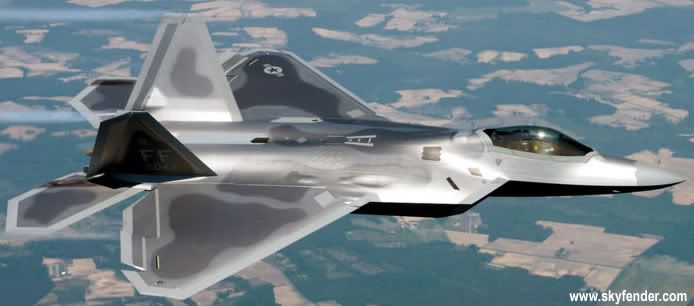
Intended to be the leading American advanced tactical fighter in the early part of the 21st century, the Raptor is the world's most expensive fighter to date with a cost of about US$120 million per unit, or US$361 million per unit when development costs are added.[1] As of April 2005 the total development and production cost of the program is at least US$70 billion, and the number of planes to be built has dropped to 438, then 381, and now to 180, down from the initial requirement of 750. Part of the reason for the decrease in the requirement is that the F-35 Lightning II uses much of the technology used on the F-22, but at a much more affordable price. To a large extent the cost of these technologies is only lower for the F-35 because they have already been developed for the F-22. Had the F-22 not been developed, the costs of these technologies for the F-35 would have been significantly higher.
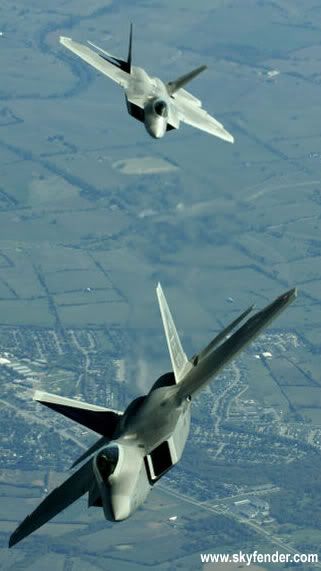
The production model was formally named F-22 "Raptor" when the first production-representative plane was unveiled on 9 April 1997 at Lockheed-Georgia Co., Marietta, Georgia. First flight occurred on 7 September 1997.
In September 2002, Air Force leaders changed the Raptor’s designation to F/A-22. The new designation, which mimicked that of the Navy’s F/A-18 Hornet, was intended to highlight plans to give the Raptor a ground-attack capability amid intense debate over the relevance of the expensive air-superiority jet. This was later changed back to simply F-22 on December 12, 2005. On 15 December 2005, the F-22A entered service.
F-35 Lighting II
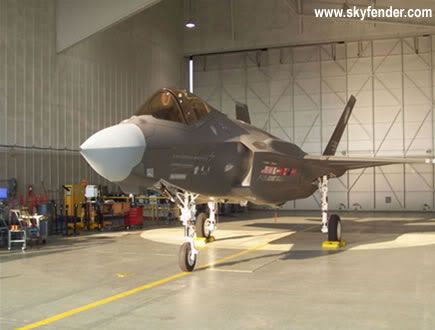
The F-35 Lightning II is a single-seat, single-engined military strike fighter, a multi-role aircraft that can perform close air support, tactical bombing, and air-to-air combat. The F-35 descended from the X-35 of the Joint Strike Fighter (JSF) program. Its development is being funded by the United States, the United Kingdom, and other partner governments. It is being designed and built by an aerospace industry team led by Lockheed Martin and major partners BAE Systems and Northrop Grumman. Demonstrator aircraft flew in 2000 a production model first took flight on 15 December 2006.
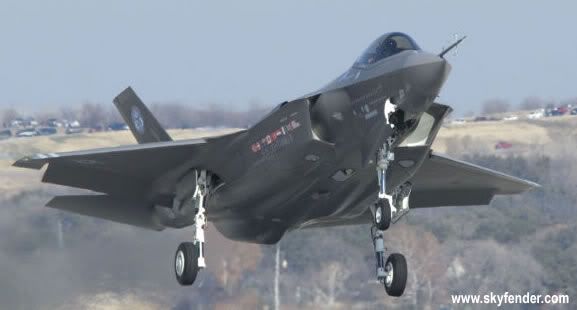
The F-35 appears to be a smaller, slightly more conventional, one-engine sibling of the sleeker, two-engine F-22 Raptor, and indeed, drew elements from it. The exhaust duct design was inspired by the General Dynamics Model 200, a 1972 VTOL aircraft designed for the Sea Control Ship. Directed-energy weapons may be installed in conventional takeoff F-35 Lightning IIs, whose lack of a direct lift fan frees up about 10 ft³ (0.28 m³) of space and whose engine provides more than 27,000 hp (20 MW) for electrical power. Some concepts, including solid state lasers and high-power microwave beams, may be nearing operational status.
F-117 NightHawk
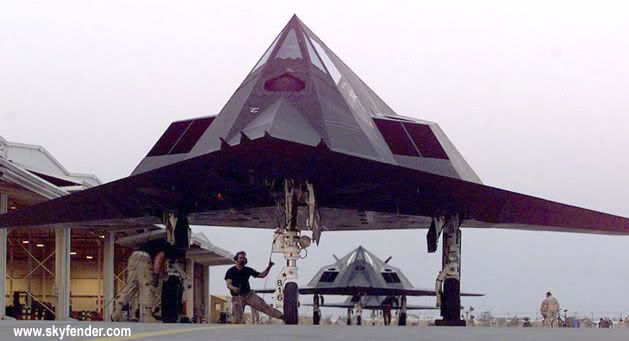
The Lockheed F-117A Nighthawk is a stealth ground-attack aircraft flown solely by the United States Air Force. As a product of the Lockheed Have Blue stealth prototype program, it became the first operational aircraft initially designed around stealth technology. The F-117A was widely publicized during the Gulf War. The Air Force has been trying to retire the F-117, due mainly to the deployment of the more effective F-22 Raptor. The Air Force is planning to retire the F-117 from October 2006 to 2008, and no new pilots will be trained to fly the plane.
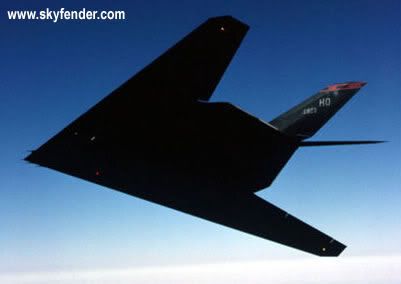
Before it was given an official name, the engineers and test pilots referred to the ungainly aircraft, which went into hiding during daylight to avoid detection by Soviet satellites, as "Cockroach", a name that is still sometimes used. The aircraft's official nickname is "Night Hawk", but the variant "Nighthawk" is also frequent. As it prioritised stealth over aerodynamics, the first model was nicknamed "The Hopeless Diamond". Similarly, it earned the nickname "Wobblin' Goblin" due to its alleged instability at low speeds; according to F-117 pilots, the nickname is undeserved
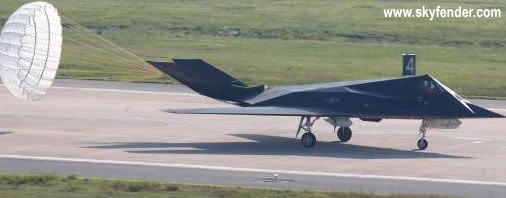
The F-117A is equipped with sophisticated navigation and attack systems integrated into a digital avionics suite. It carries no radar, which lowers emissions and cross-section. It navigates primarily by GPS and high-accuracy inertial navigation. Missions are coordinated by an automated planning system that can automatically perform all aspects of a strike mission, including weapons release. Targets are acquired by a thermal imaging infrared system, slaved to a laser that finds the range and designates targets for laser-guided bombs.
The F-117A's split internal bay can carry 5,000 lb (2,300 kg) of ordnance. Typical weapons are a pair of GBU-10, GBU-12, or GBU-27 laser-guided bombs, two BLU-109 penetration bombs, two Wind- Corrected Munition Dispensers (WCMD), or two Joint Direct Attack Munitions (JDAMs), a GPS/INS guided stand-off bomb. It can theoretically carry two examples of nearly any weapon in the USAF inventory, including the B61 nuclear bomb. There are a number of bombs that it cannot carry, either because they are too large to fit in its bomb bay, or are incompatible with the F-117's carry system.
F-14 Tomcat
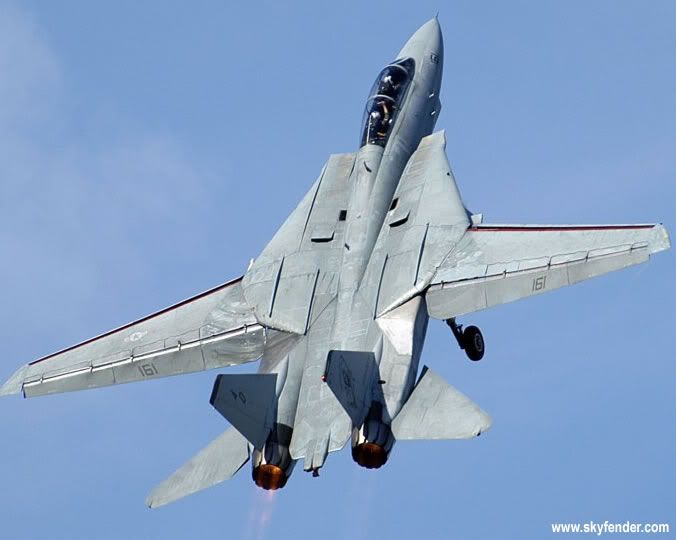
The Grumman F-14 Tomcat is a supersonic, twin-engine, two-seat, variable geometry wing aircraft. The F-14 was the United States Navy's primary maritime air superiority fighter, fleet defense interceptor and tactical reconnaissance platform from 1972 to 2006. It later performed precision strike missions once it was integrated with LANTIRN. It was developed after the collapse of the F-111B project, and was the first of the American teen-series fighters which were designed incorporating the experience of air combat in Vietnam against MiGs. It entered service in 1972 with the U.S. Navy, replacing the F-4 Phantom II. It was later exported to the Imperial Iranian Air Force in 1976. It was retired from the U.S. Navy fleet on 22 September 2006, having been replaced by the F/A-18E/F Super Hornet.[3] As of 2007, it remains in service only with the Islamic Republic of Iran Air Force.
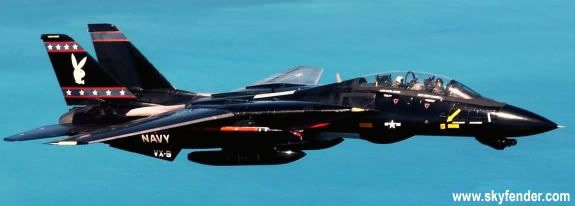
The F-14 was designed to improve on the Phantom's air combat performance in several respects. The F-14's canopy offers the crew excellent visibility throughout the 360 degrees in a circle. The plane features variable geometry wings that sweep automatically during flight. For high-speed intercept, they are swept back; they swing forward to allow the F-14 to turn sharply and dogfight. The F-14's fuselage and wings allow it to climb faster than the F-4, while the twin-tail arrangement offers better stability. During the Vietnam conflict, the F-4's lack of a gun was criticized by fighter pilots, and the belated use of a 20 mm gun pod attached to a hardpoint, while useful, was not an optimal solution. As a result, Grumman equipped the F-14 with an internal 20 mm Vulcan Gatling-type gun mounted on the left side, and can carry Phoenix, Sparrow, and Sidewinder anti-aircraft missiles.
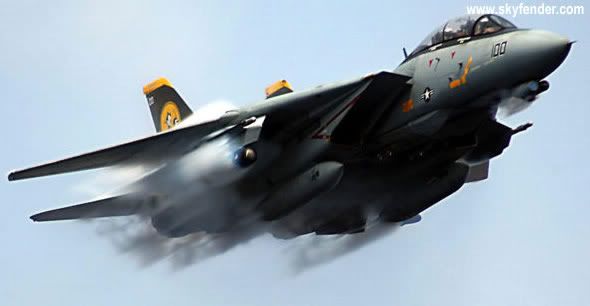
The Navy wanted the F-14 to have a thrust-to-weight ratio of unity or greater, though this was not achieved until after the F-14 entered service because of delays in engine development. A higher thrust to weight ratio allows a fighter pilot to use the vertical as well as horizontal dimension when dogfighting. The value of this was clearly demonstrated via the Navy's Top Gun program, begun in March of 1969. F-4 Phantom crews frequently fought North Vietnamese MiG-17s. The MiG was lighter and could turn more sharply in a dogfight than the Phantom. However, the Phantom's crew could use its superior thrust to exploit the vertical dimension, and, as one example, Top Gun instructors taught F-4 crews to perform the "egg maneuver," wherein a Phantom engaging a MiG would climb sharply, completing a loop inverted and then dive on the hapless enemy. The result was that, after 1970, US Navy fighter crews enjoyed a greater than 12:1 kill ratio over North Vietnamese pilots.
The F-14 was designed to incorporate these lessons. The intended thrust to weight ratio of unity would allow it to outclimb any opposing fighter jet; the swing-wing would allow it to "knife-fight" in the horizontal as well, and the internal gun would ensure the crew had a reliable, lethal weapon to use when knife-fighting.
B-2 Spirit
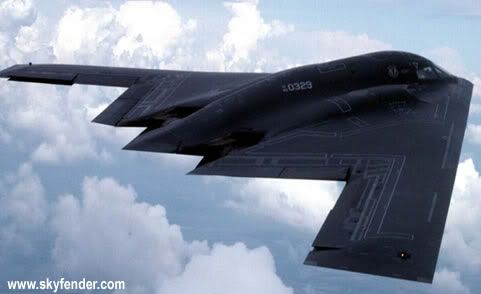

The Northrop Grumman B-2 Spirit is a multi-role stealth bomber able to drop conventional and nuclear weapons. The bomber development was a milestone in the bomber modernization program of the U.S. Department of Defense.
The B-2's stealth technology is intended to help the craft penetrate defenses previously impenetrable by combat aircraft. The original procurement of 135 aircraft was later reduced to 75 in the late 1980s. In his 1992 State of the Union address, President George H. W. Bush announced total B-2 production would be limited to 20 aircraft (later increased to 21 by refurbishing a test aircraft). This reduction was largely a result of the disintegration of the Soviet Union, which effectively rendered void the Spirit's primary mission. The B-2 is one of the most expensive planes ever built: estimates for the costs per plane range from 1.157 billion to 2.2 billion US dollars. By comparison, a Nimitz class aircraft carrier costs $4.5 billion. However, quoted cost figures are highly inflated by the inclusion of the aircraft's enormous development cost and infrastructure development costs in the unit price; published estimates have shown the unit "production" cost for the aircraft alone is approximately $150 million per aircraft.

The blending of low-observable technologies with high aerodynamic efficiency and large payload gives the B-2 significant advantages over previous bombers. Its traveling range is approximately 6,000 nautical miles (11,100 km) without refueling. Also, its low-observation ability provides the B-2 greater freedom of action at high altitudes, thus increasing its range and a better field of view for the aircraft's sensors. With its GPS Aided Targeting System (GATS) combined with GPS-aided bombs such as Joint Direct Attack Munition (JDAM), it can use its passive electronically scanned array APQ-181 radar to correct GPS errors of targets and gain much better than laser-guided weapon accuracy with "dumb" gravity bombs with a GPS-aided "smart" guidance tail kit attached. It can bomb 16 targets in a single pass when equipped with 1000 or 2000-pound bombs, or as many as 80 when carrying 500-pound bombs.

0 comments:
Post a Comment